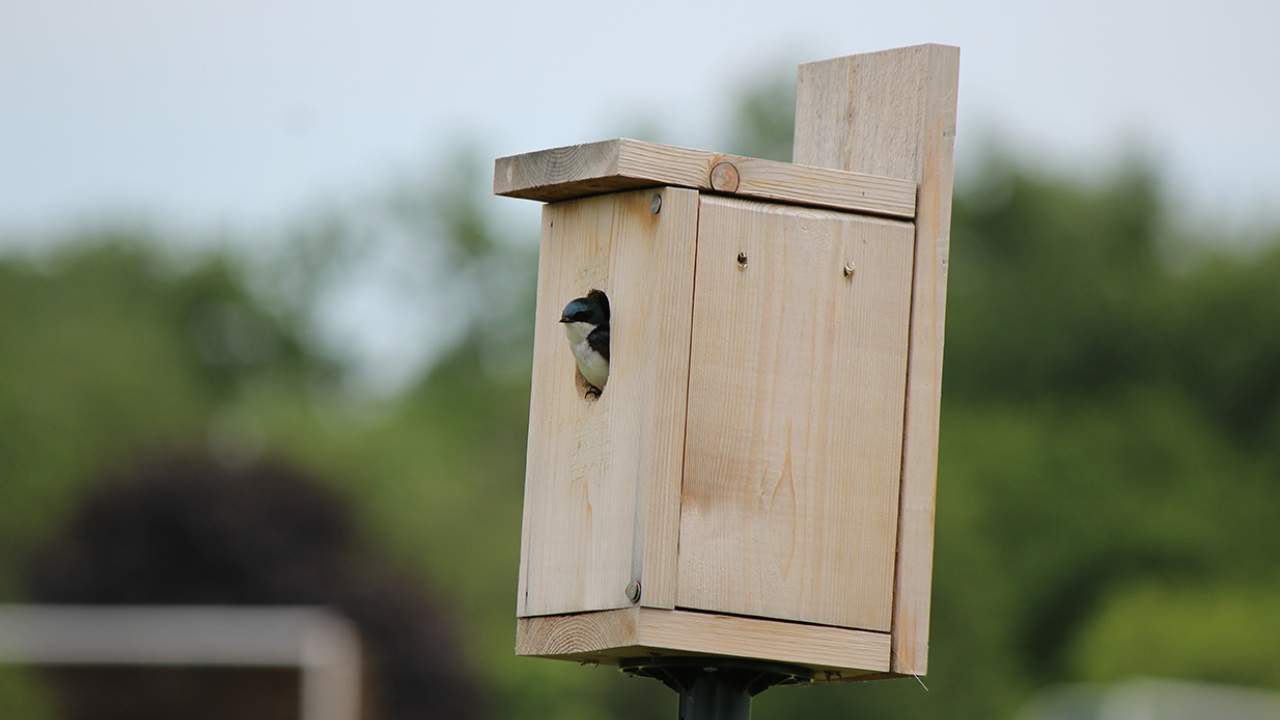Creating a memorable park experience at the Park District includes creating sustainable practices and ensuring the native plant and wildlife in the parks is conserved for generations to come. Conservation efforts are a key component to park maintenance and horticultural work at the District.
Native wildlife can find shelter throughout Elmhurst parks. Bird houses are a popular Eagle Scout project and you can find several at Eldridge Park, including wren houses and bluebird boxes. Bees are important pollinators and creating a home for various bee species in the parks allows them to do their work at improving the surrounding natural environment. Pollinator beds and bee boxes located at Eldridge, Berens, Wilder Park and the Prairie Path give bees a place to nest. Fortunately, these bee boxes attract solitary bee species, which aren’t known for stinging.
Monarch Waystations help combat the loss of habitat by providing resources like milkweed and nectar producing plants where monarch butterflies can breed and rest during their annual migration. Certified waystations are located at Berens, Eldridge, Wilder Park and the Great Western Prairie while milk weed can be found in beds throughout the District.
Other conservation efforts include water collection at the green house, which saves on water costs, and the green roof at the Administrative Office. “Green roofs protect the roof and materials,” says Price. Prairie plants on the roof provide oxygen, cool the environment and absorb water, preventing water from draining off the roof. In an effort to reduce pesticide use, the District also has a test site at Van Voorst Park which is pesticide free. During this trial run, staff continue to perform all other regular maintenance duties without the use of herbicides or synthetic fertilizers.
Throughout the Park District are no mow areas, which contribute to a park’s whole ecosystem. “In a land locked suburban community, it provides habitat,” says Dan Payne, Director of Parks. These areas also lower emissions and cut down on fuel usage by the District mow crews. “Any areas we can eliminate or minimize turf grass can save money for the District in labor and equipment wear and tear and to provide beneficial habitat as well as being aesthetically pleasing.”
These areas also promote native plant growth and the Park District, along with many volunteers, works to make sure areas like this are kept clear of invasive species. Controlled burns are administered in prairie areas every 3-5 years to maintain the growth of native prairie species. Native plants take many forms, including wildflowers. The Park District grows up to 12,000 wildflower plants a year, which are transplanted to the parks.
Eldridge Park, as the home to many of these conservation elements, is a wonderful place to see the effects supporting plant and wildlife has. Much of the vision for the park’s natural areas is attributed to Park District Horticulturist, Dave Price. “Dave’s vision and hard work transformed the park dramatically. It’s a huge accomplishment,” says Payne. “The native insects and wildlife are coming back in that area.”
The Park District’s commitment to conservation continues to grow and evolve, and District staff looks forward to their ongoing work. “It’s right and I enjoy it,” says Price.



